Even a few years back, a common person’s normal weekday involved getting ready for the office in the morning, commuting to the workplace, putting in his shift from his designated cubicle or place and then going back home.
Things have changed now quite strikingly. A workplace is no longer confined to a particular location or premise. For many, the office has come home. And, that number is steadily growing.
It’s true that in many countries, including India, the major switch to remote working was propelled by the pandemic. However, this trend had started much before that.
This shift in the mode of the day-to-day workflow was made possible and facilitated by the application of cloud computing or cloud operations.
The flexibility, ease of access, overall lower expenditure and the ability for quick deployment made organizations explore the switch to cloud-based or hybrid operations much before coronavirus became a subject of discussion.
However, like with on-premises networks, cloud systems also need to be well protected from nefarious actors, who have also advanced their tools. With critical data, records and information being shared and stored through cloud-based applications, threats of breaches, malware injection and other cyber-attacks are bound to be a matter of concern.
Many surveys have revealed that approximately 8 out of 10 cybersecurity professionals remain worried about cloud security.
Given the resources on the cloud are as sensitive and vital for an enterprise as on the premise and since the bad actors are so well-equipped, it is of paramount significance to have similar kind of stringent security measures in place for cloud operations.
- The first major aspect is to align the data protection measures with the business and development aims and targets of an organization. It is crucial to determine the most critical data and information, and this would vary depending on the company’s realm of functioning. The primary aim would be to keep those resources as safeguarded as possible so that the normal functioning is never compromised.
- The organization should have a deal in place on sharing the security responsibilities with the cloud service provider. Generally, the service provider takes care of the network infrastructure while companies are responsible for the data. This should be well defined to avoid confusion.
- Roles and responsibilities should be clearly stated so that people have access to only those resources they are authorized to. ‘Never trust and always verify’ approach should be strictly followed.
- Complete visibility of the network telemetry data and use of network detection and response (NDR) solution for swift identification and mitigation of potential threats.
- Data should be encrypted, and software updates and patches should be regularly pushed out. Automation of processes should be employed as much as possible to avoid human errors or oversights.
- Employees should be well trained and informed about the healthy practices of using cloud service systems.
- The regulations, guidelines and compliance measures applicable for the respective industry or enterprise must be followed and well monitored.
In the changing working landscape post-pandemic, the use of cloud and hybrid services have become extremely important so that the employees can continue to access the organization’s network while working from any location. However, it also entails that threat actors also have the wherewithal to keep things safe.
Vehere’s PacketWorker for on-premises enterprise solution is now extended to the cloud and for work-from-home employees or road warriors. The PacketWorker CT and PacketWorker HT — which ensure cloud security and detection and response solution irrespective of user location — offer 100% flexibility on the go, zero-touch investigations and 360-degree visibility.









